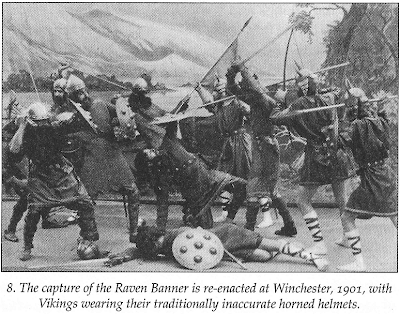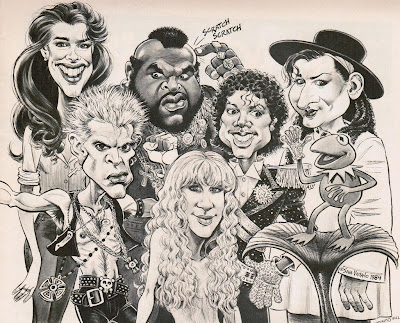So in the run-up to GaryCon I told all-around cool dude and notable beard enthusiast Adam Thornton that I would run a pick-up game of Encounter Critical for his crew. Like the year before, we never were on the same page schedule wise, partially because I was only day-tripping the con, partially because some event slots seemed to overlap and partially because I am an idiot. Next year I'm just gonna submit a game ahead of time and get on the ding dang schedule.
As the date of the convention approached I started occasionally thinking to myself, "You really need to come up with an adventure, dude." But nothing would pop into my mind. By the day before the con I had convinced myself to run something already written, either the sample adventure or part of my Asteroid 1618 module or one of the many weird things in the Files section of the EC yahoo group. So I printed some stuff out and shoved it into my gaming bag, fully intending the next day to pretend that I had a coherent adventure ready to go while actually pulling random EC-related documents from my bag.
But then something happened. I don't know if it was the trouble I had sleeping, or the gin I drank not long before bedtime or just my unconscious mind working on the problem, but I woke up Saturday morning with a question fully formed in my mind:
"What the heck is an Omnitron?"
My wife's laptop was handy so I hit up wikipedia looking for an answer. I'm not sure why I chose wikipedia rather than google (or blekko.com, which I find to be better than google for simple searches) but I wasn't fully awake yet and maybe in my hypnogogic fugue I was just dead certain that A) an omnitron was a real thing and B) it had its own wikipedia page. Turns out I was right on A but wrong on B. The Omnitron was a particle accelerator that was designed by Albert Ghiorso but never built. Ghiorso is cool as heck because he was a Manhattan Project physicist who co-discovered every element from 95 to 106 on the periodic table.
After reading Ghiorso's wikipedia entry I took out my little pocket Moleskine notebook, which I carry pretty much everywhere in case I get an idea or need to write down the name of a book. The following adventure synopsis poured out onto the page:
TRANSCRIPT:
Omnitronic Joe
one of the Immortobot line
now reduced to talking
arm & pile of lesser components
seeks party to retrieve
his right ankle
Hyperdog X-14
like Krypto but
a little pug
opposes Joe.
must visit the Great Hive
Oracle to learn
location
Guarded by Bee Girls
must ride the great
mauve mega maggot
to center of Vanth
fire-
breathing
parrots
fight giant electro neuronic
slime dudes
who are enslaved by
Necranna deQuire
chainsaw x-bow & roboclaw
hand) are casting
a big long ritual
spell: animate planet
(I'm pretty sure the part about the fire-breathing parrots was already on the otherwise-empty page when I started, but I was totally going to use that.)
Read More
As the date of the convention approached I started occasionally thinking to myself, "You really need to come up with an adventure, dude." But nothing would pop into my mind. By the day before the con I had convinced myself to run something already written, either the sample adventure or part of my Asteroid 1618 module or one of the many weird things in the Files section of the EC yahoo group. So I printed some stuff out and shoved it into my gaming bag, fully intending the next day to pretend that I had a coherent adventure ready to go while actually pulling random EC-related documents from my bag.
But then something happened. I don't know if it was the trouble I had sleeping, or the gin I drank not long before bedtime or just my unconscious mind working on the problem, but I woke up Saturday morning with a question fully formed in my mind:
"What the heck is an Omnitron?"
My wife's laptop was handy so I hit up wikipedia looking for an answer. I'm not sure why I chose wikipedia rather than google (or blekko.com, which I find to be better than google for simple searches) but I wasn't fully awake yet and maybe in my hypnogogic fugue I was just dead certain that A) an omnitron was a real thing and B) it had its own wikipedia page. Turns out I was right on A but wrong on B. The Omnitron was a particle accelerator that was designed by Albert Ghiorso but never built. Ghiorso is cool as heck because he was a Manhattan Project physicist who co-discovered every element from 95 to 106 on the periodic table.
After reading Ghiorso's wikipedia entry I took out my little pocket Moleskine notebook, which I carry pretty much everywhere in case I get an idea or need to write down the name of a book. The following adventure synopsis poured out onto the page:
TRANSCRIPT:
Omnitronic Joe
one of the Immortobot line
now reduced to talking
arm & pile of lesser components
seeks party to retrieve
his right ankle
Hyperdog X-14
like Krypto but
a little pug
opposes Joe.
must visit the Great Hive
Oracle to learn
location
Guarded by Bee Girls
must ride the great
mauve mega maggot
to center of Vanth
fire-
breathing
parrots
fight giant electro neuronic
slime dudes
who are enslaved by
Necranna deQuire
with radioactive third
eye
she and her wookee
sidekick Mr. Balls (ownschainsaw x-bow & roboclaw
hand) are casting
a big long ritual
spell: animate planet
(I'm pretty sure the part about the fire-breathing parrots was already on the otherwise-empty page when I started, but I was totally going to use that.)







































